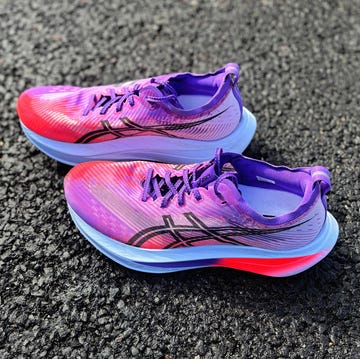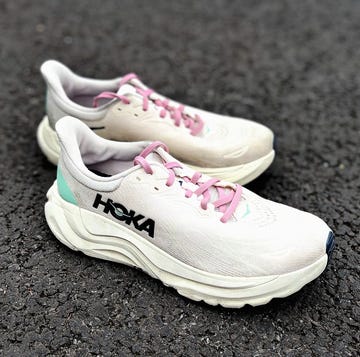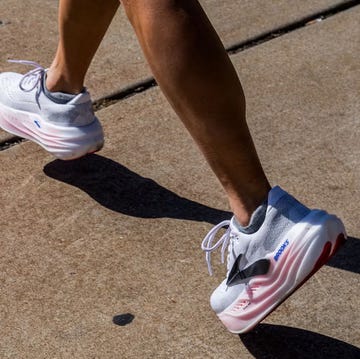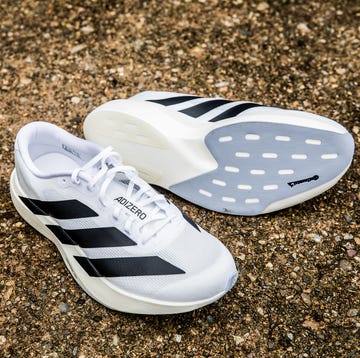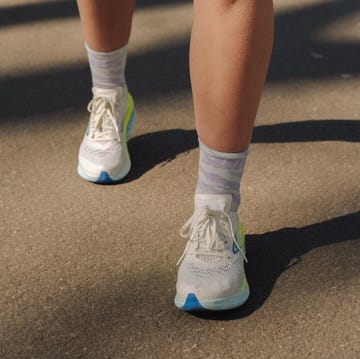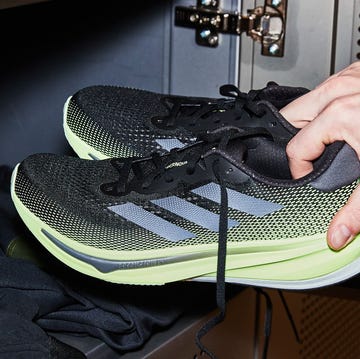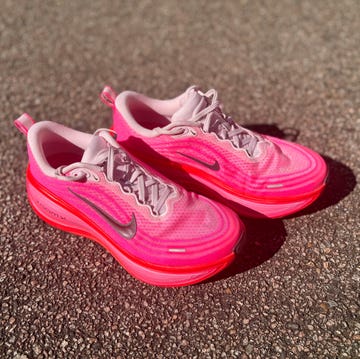If you’ve been running for awhile, you have probably read about or experienced the benefit of having more than one pair of running shoes and rotating them through your weekly miles. This might mean using one particular shoe for a long run and another for shorter, faster speed work. Or it could be alternating similar trainers for easy runs.
But with everything in life, sometimes there can be too much of a good thing, even when it comes to rotating your running shoes. So how often should you switch up your running shoes?
How often should you rotate running shoes?
Every runner is different, with different weekly mileage, paces, and goals. More experienced runners with higher mileage might rotate their shoes every few runs, running in maybe three pairs per week. This could be with an entirely different shoe—a lighter, firmer shoe for speed work, for example—or the same exact shoe model, but a few different pairs.
What everyone's reading
If your weekly mileage is low, less than 20 miles, for example, or you’re a brand new runner, then you probably don’t need to swap out your shoes; you’re not running enough for it to be worth the financial investment, and your body may not have time to adapt to a particular shoe.
Adapting to a shoe is important because running shoes are designed to aid in running efficiency and being a more efficient runner can help you avoid injury. When you choose a shoe, you’ll factor in how the shoe affects the position of your foot, ankle, knee, hip, and spine. You’ll look at the width and size of the shoe and how those fit your feet.
Understanding the basic biomechanics of your running—if you’re a heel striker, a mid-foot striker, or a severe heel striker—and whether you overpronate (turn inward) will help you find a shoe or a style of shoe that fits your mechanics best and makes for a comfortable ride.
What are signs that you’re switching your running shoes too much?
One of the biggest signs you might be rotating your running shoes too frequently is otherwise unexplained niggles or symptoms of injury. You might also experience blisters or overall soreness. Another tell-tale sign is how your feet and calves feel in the morning. If they’re not feeling so good, it could be due to the stress your body is experiencing from changing shoes.
In order to adapt to training, runners need to introduce different stimuli. That could include adding a hill workout to your schedule, decreasing recovery time between intervals, or trying new shoes. But it’s best not to try a new pair of shoes when also tackling a new workout.
If you do experience issues, cut back on your rotation, maybe just try two shoes per week, to see if it resolves (old fashioned trial and error!).
A change in shoes undoubtedly can tweak your gait or where your hips align, says Peter Wenger, M.D., CEO of Princeton Sports and Family Medicine. Wenger, who’s also an ultrarunner, explains that a runner’s biomechanics—how a runner moves—can change depending on the shoe. That’s not necessarily a bad thing, but if you’re changing shoes to the point at which your body can’t learn how to run in a specific shoe, it could lead to inefficiency and potentially, injury.
What should you consider when switching shoes?
Just as you wouldn’t go from running 10 miles a week to running 40 miles a week without gradual buildup–right? Right?—you wouldn’t wear a maximalist Hoka Clifton-style shoe and then head on over to a zero drop Altra shoe.
Your body needs to slowly adjust to different types of shoes. So, for example, if you’re used to a highly cushioned shoe with a higher drop, try rotating it with a cushioned shoe with a slightly lower drop, rather than going right to zero drop.
If you’re introducing a carbon-plated super shoe for a goal race, don’t go out and run 15 miles in them on your first try. Instead, add them into shorter workouts, like midweek easy runs or intervals at your targeted race pace, to let your body adjust to the different mechanics of the shoe.



